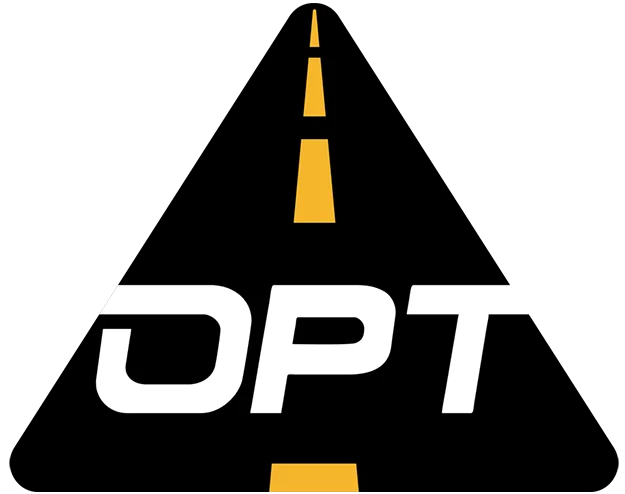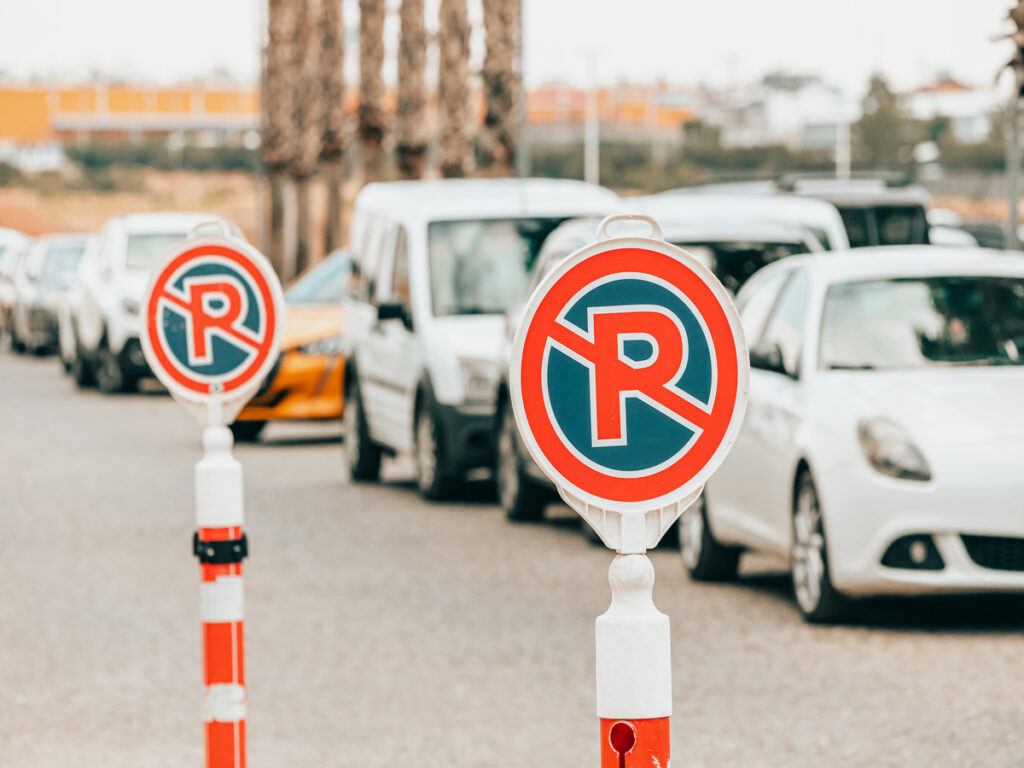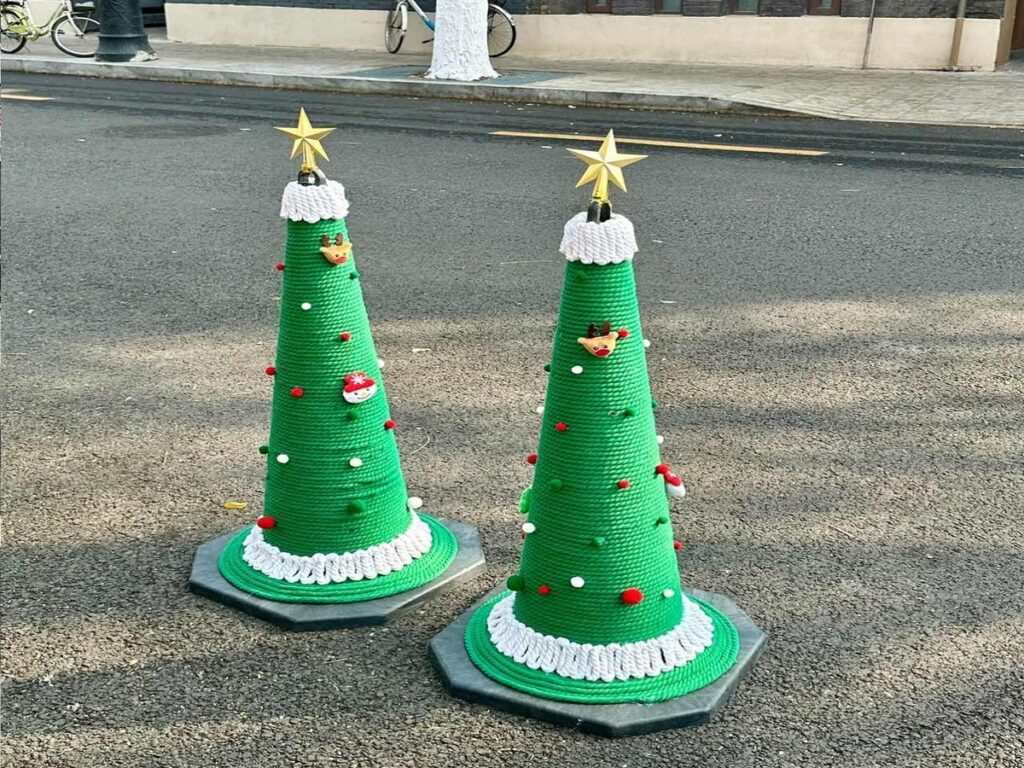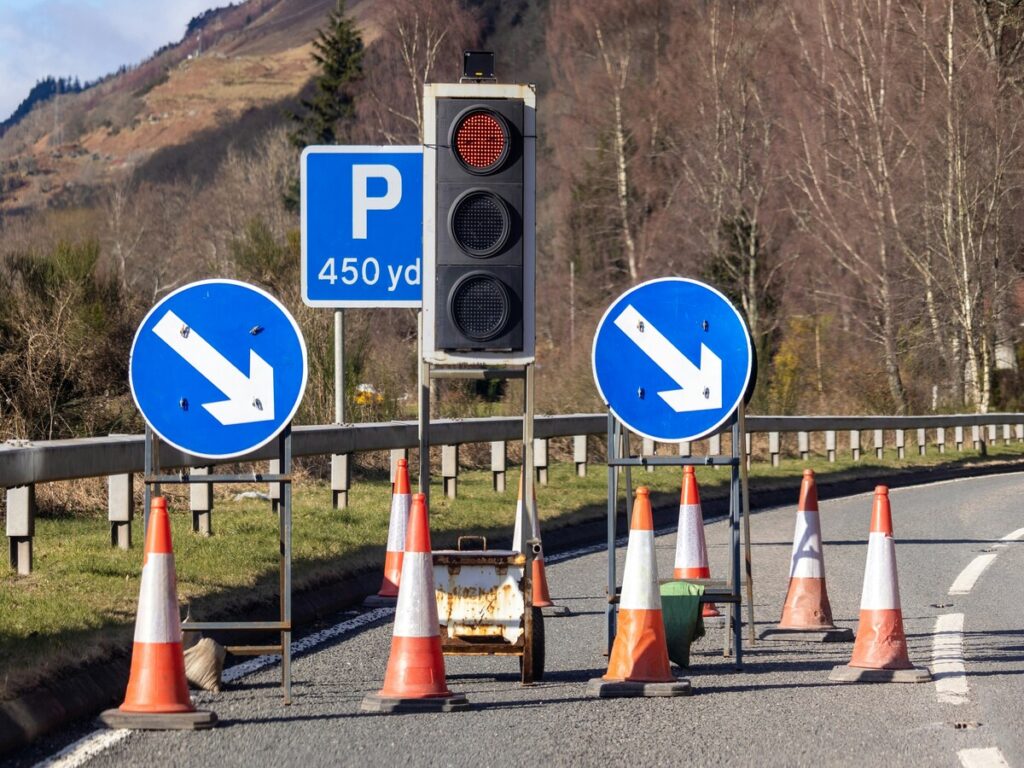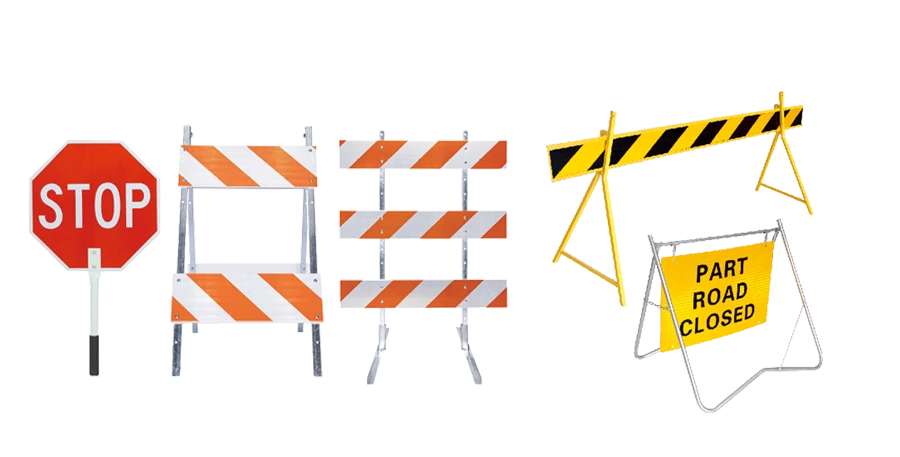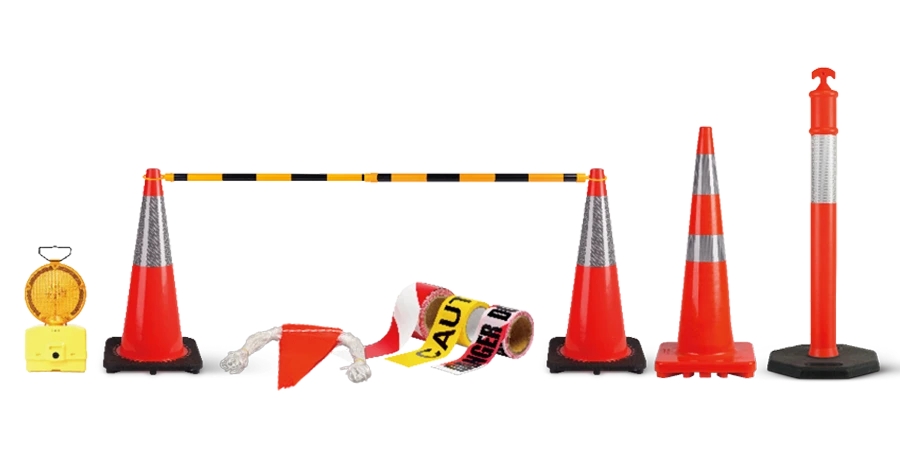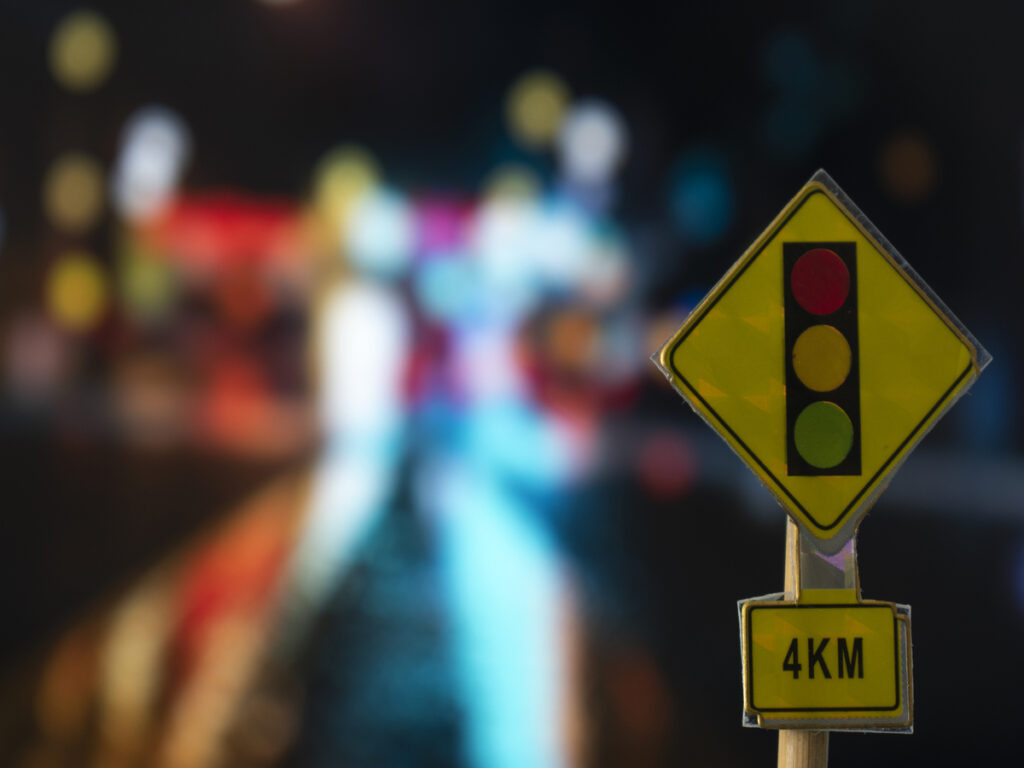
조명이 약한 지역에서는 안전 표지판을 보기가 어렵습니다.. 밝은, 반사 색상은 이 문제를 해결하는 데 도움이 됩니다.. 그들은 빛을 당신의 눈으로 반사시킵니다, 어둠 속에서도 표지판을 볼 수 있도록. 예를 들어, 연구에 따르면 정지 신호가 밝을수록 야간 충돌 사고가 줄어드는 것으로 나타났습니다. 4.4%. 수시티에 위치, 교통 표지판 개선으로 사고 감소 38%. 이것은 안전 표시 색상이 어두운 곳에서도 더 안전하게 유지된다는 것을 증명합니다..
위험을 피하기 위해서는 어두운 곳에서도 선명하게 보는 것이 중요합니다. 연구에 따르면 자동차 색상도 충돌 사고에 영향을 미칩니다.. 어두운 차량은 일출이나 일몰 시 보기가 더 어렵습니다.. 밝은 사용, 표지판의 반사 색상은 눈에 띄는 데 도움이 됩니다.. 이를 통해 더 쉽게 안전을 유지하고 위험을 피할 수 있습니다..
광교통 고품질을 제공합니다, 저조도 조건에서 가시성을 향상시키는 반사 안전 표지판. OPTRAFFIC 판매용 내구성 안전 표지판은 안전 표준을 충족하고 중요한 영역에 대한 인식을 향상시키도록 설계되었습니다..
문의 사항이 있거나 반사 교통 표지 및 안전 솔루션에 대해 자세히 알아보려면 지금 문의하세요..
주요 테이크 아웃
- 안전 표지판의 밝고 반짝이는 색상은 사람들이 어둠 속에서도 쉽게 볼 수 있도록 도와줍니다.. 사고가 발생하는 것을 막을 수 있습니다.
- 눈에 띄는 색상을 사용합니다, 노란색 바탕에 검은색처럼, 표지판을 쉽게 읽을 수 있고 빠르게 찾을 수 있습니다..
- 사람들이 볼 수 있는 곳에 표지판을 설치, 바쁜 장소에서 눈높이처럼, 운전자와 보행자의 안전을 돕습니다..
- 좋은 반사 재료 선택, 밝은 노란색이나 주황색처럼, 낮은 조명에서 표지판이 더 잘 작동하도록 만듭니다..
- 안전 규칙 준수, ANSI나 ISO와 같은, 귀하의 표지판이 안전하고 제대로 작동하는지 확인하십시오..
고반사 안전표지 색상의 주요 특징
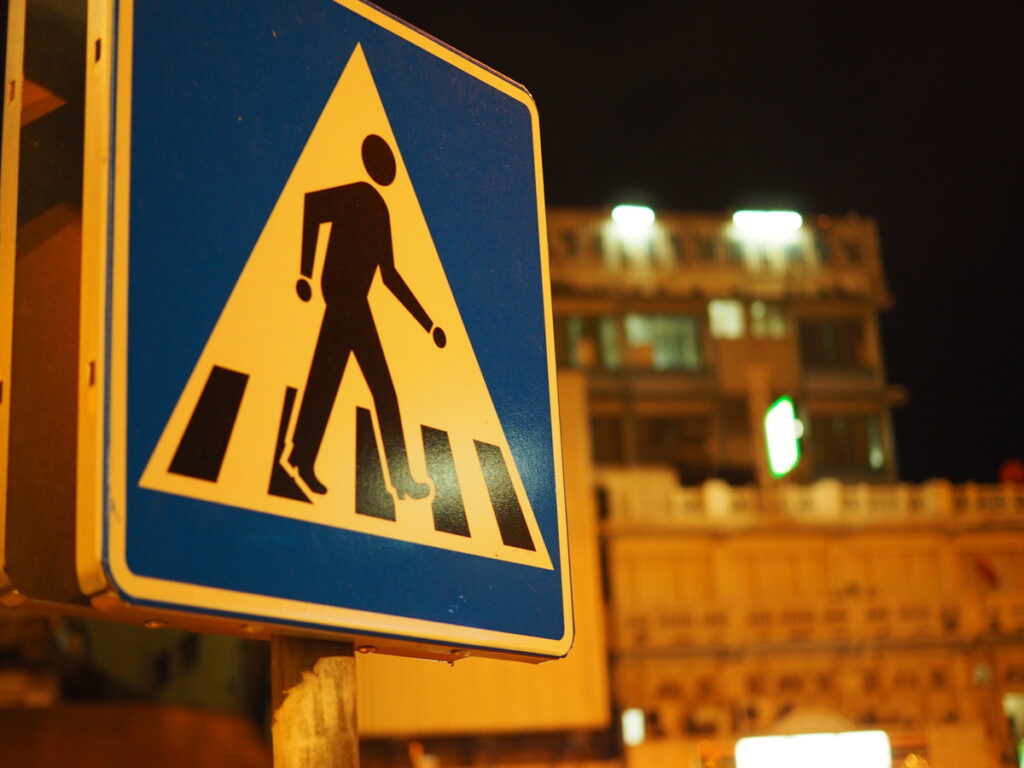
Understanding Reflectivity and Its Role in Visibility
Reflectivity helps safety signs stand out, 특히 희미한 빛에서. It works by sending light back to its source, 자동차 헤드 라이트처럼. This keeps safety signs easy to see, 밤에도. Several factors make reflectivity effective:
- Specular Reflection: This acts like a mirror, sending light back to you.
- Luminance: Brighter surfaces send more light to your eyes, improving clarity.
- 차이: A sign with bold colors against a different background is easier to notice. 예를 들어, red on white is clearer than red on gray.
Reflective materials boost these effects, making them vital for safety signs on highways, 건설 구역에서, or at work sites.
반사 재료: Types and Applications
Different reflective materials are used to make traffic safety signs work well in various places. Each type has special features for specific needs:
| 재료 유형 | 설명 | 일반적인 용도 |
|---|---|---|
| Engineer-Grade Reflective | Basic reflection, 교통량이 적은 지역에 적합. | 주차장, 사유 도로 |
| 고강도 프리즘 | 더 밝은 반사, 바쁜 도로나 작업 구역에 적합. | 도로, 건설 구역 |
| 다이아몬드 등급 반사 | 가장 밝은 반사, 중요한 안전 요구 사항에 가장 적합. | 고속도로, 비상 표지판 |
이러한 재료는 다음과 같은 방법을 사용하여 빛을 반사합니다. 내부 전반사 그리고 임피던스 불일치. 예를 들어, 다이아몬드 등급 소재는 더 많은 빛을 반사하기 위해 작은 프리즘을 사용합니다., 중요한 안전 표지판에 이상적입니다..
색상도 가시성에 중요합니다. 아래 표는 주요 안전 색상과 그 용도를 보여줍니다.:
| 색상 | 설명 | 표준 참조 |
|---|---|---|
| 검은색 | 사람들에게 경고, 종종 대조되는 배경과 결합됨. | ANSI Z535, ISO 3864-4:2011 |
| 인광성 노란색-흰색 | 더 나은 가시성을 위해 ISO에서 추가한 특수 색상. | ISO 3864:2011 |
| 형광 오렌지, 노란색, 녹색 | 위험한 지역에서 작업자를 안전하게 보호하기 위해 밝은 옷에 사용됩니다.. | NIOSH 연구, 연방 고속도로 관리 |
올바른 반사 소재와 색상을 사용하면 안전 표지판이 명확하고 유용하게 유지됩니다., 어두운 곳에서도.
반사율이 높은 안전 표지판을 위한 최고의 색상
형광 노란색과 녹색: 밝은 의류 및 간판에 적합
형광 노란색과 녹색은 안전 표지판에 적합합니다.. 빛을 잘 반사해요, 어두운 곳에서도 밝게 유지. 형광 노란색은 보기 쉽습니다, 색맹이 있는 사람들에게도. 블랙과 함께 매치하면 더욱 돋보이네요. 이렇게 하면 표지판을 더 빨리 알아차릴 수 있습니다..
이러한 색상은 안전복 및 표지판에 자주 사용됩니다.. 위험을 명확하게 표시해야 하는 도로나 공장과 같은 장소에서 볼 수 있습니다.. 그들의 밝음이 시선을 사로잡는다, 사고를 예방하는 데 도움이됩니다.
형광 오렌지: 작업 구역에 적합
형광 오렌지는 건설 및 작업 영역에서 일반적입니다.. 흐린 날씨나 황혼에도 밝은 색상이 계속 보입니다.. 빛을 흡수해 일반 컬러보다 더 밝게 빛나는데요.
- 연구에 따르면 형광 오렌지색은 운전자가 작업 구역을 알아차리는 데 도움이 됩니다..
- 낮 동안의 가시성이 향상됩니다., 시력이 좋지 않은 운전자에게도.
- 연구에 따르면 더 안전한 운전으로 이어진다는 사실이 밝혀졌습니다., 차선에 머무르는 것이 더 나은 것처럼.
원뿔에 주황색이 보일 것입니다, 장벽, 작업 구역 표지판. 그 밝기는 운전자와 보행자가 위험을 발견하는 데 도움이 됩니다., 모든 사람을 안전하게 지키십시오.
빨간색: 긴급 상황 및 경고에 대한 대담한 알림
빨간색은 비상 및 경고 신호에 강한 색상입니다.. 눈에 잘 띄네요, 어두운 곳에서도. 그렇기 때문에 정지 신호와 화재 경보기가 종종 빨간색으로 표시됩니다..
| 발견 | 설명 |
|---|---|
| 색상의 가시성 | 낮은 조명에서는 빨간색이 주황색이나 노란색보다 더 잘 보입니다.. |
| 심리적 영향 | 빨간색은 사람들이 경계심을 갖고 위험을 빨리 알아차리게 만듭니다.. |
| 색상 인식 | 빨간색은 위험을 명확하게 나타냅니다., 특히 배경이 대담한 경우. |
레드는 빠르게 시선을 사로잡는다, 안전 표지판에 딱 맞습니다.. 긴급하고 중요하다고 느끼기 때문에 위험에 빠르게 대응하는 데 도움이 됩니다..
저조도 환경에서 반사 코팅과 그 역할
안전표지용 반사코팅의 종류
반사 코팅으로 어두운 조명에서도 안전 표지판이 잘 보이도록 도와줍니다.. 이 코팅은 빛을 반사합니다., 표지판을 쉽게 볼 수 있습니다. 다양한 코팅은 다양한 용도에 가장 적합합니다.:
- 반사 방지 코팅: 눈부심을 줄이고 더 많은 빛을 통과시킵니다.. 명확성을 향상시킵니다., 특히 야간 운전이나 백내장과 같은 시력 문제가 있는 사람들의 경우.
- 그래픽 아트 코팅: 여기에는 대담하고 명확한 간판 디자인을 위한 페인트가 포함됩니다.. 고대비 안전 표지판을 만드는 데 적합합니다..
- 재귀반사 코팅: 이들은 빛을 다시 반사하기 위해 작은 구슬이나 프리즘을 사용합니다.. 이것은 밤에 표지판을 보는 데 매우 유용합니다..
올바른 코팅을 선택하면 고속도로나 작업 구역과 같은 장소에서 표지판이 잘 작동하는 데 도움이 됩니다.. 이러한 코팅에 밝은 안전 표시 색상을 추가하면 더욱 향상됩니다..
반사 소재가 야간 가시성을 향상시키는 방법
반사 소재는 저조도에서도 선명하게 보이는 데 핵심입니다.. 그들은 빛을 광원으로 다시 반사시킵니다., 자동차 헤드 라이트처럼, 그래서 표지판과 사물이 눈에 띕니다. 이는 도로 및 작업 영역의 안전에 매우 중요합니다..
- 역반사체는 빛을 광원으로 다시 보냅니다., 운전자가 멀리서 표지판과 사람들을 볼 수 있도록 돕습니다..
- 형광 소재와 반사 소재를 혼합하여 밤낮으로 표지판을 눈에 띄게 유지합니다.. 반사 조끼는 이 조합을 사용하여 모든 조명에서 작업자를 안전하게 보호합니다..
- 새로운 반사 재료, Safe Reflections Inc.의 제품과 같습니다., 근로자와 보행자의 야간 안전을 훨씬 더 좋게 만들었습니다..
반사 소재로 대비와 선명도 향상, 위험을 더 쉽게 발견할 수 있도록. 이를 통해 사고가 줄어들고 모두가 더 안전해집니다..
안전표지 가시성 극대화 전략
가장 좋은 위치에 반사 표지판 배치
반사 표지판을 올바른 위치에 배치하면 더 쉽게 볼 수 있습니다.. 반사 표지판이 더 잘 작동하도록 하려면 다음 팁을 따르십시오.:
- 누가 반사 신호를 보게 될지 알아두세요. 사람들이 자주 보는 곳에 놓아두세요. 예를 들어, 운전자는 도로에서 눈높이에 반사 표지판이 필요합니다.
- 혼잡한 장소를 선택하세요. 혼잡한 지역의 표지판, 교차로나 작업 구역과 같은, 더 주목받다.
- 밝은 색상과 강한 대비를 사용하세요.. 이는 반사 표지판이 배경에서 눈에 띄는 데 도움이 됩니다..
- 다양한 자세를 시도해 보세요. 각도와 높이를 테스트하여 가장 깨끗한 지점을 찾으세요..
좋은 배치는 작업자의 안전을 유지하고 위험을 낮춥니다.. 예를 들어, 적절한 높이의 반사 표지판은 운전자가 작업 구역을 통해 안전하게 이동할 수 있도록 도와줍니다., 특히 밤에.
간판 크기와 대비가 중요한 이유
표지판의 크기와 색상은 표지판을 보는 데 영향을 미칩니다.. 교통안전표지판이 커져 멀리서도 쉽게 읽을 수 있습니다.. 대비가 강한 안전표지 색상을 사용하면 단어가 더욱 명확해집니다.. 아래 표는 글자 크기가 읽을 수 있는 거리에 어떤 영향을 미치는지 보여줍니다.:
| 문자 높이 | 최고의 시청 거리 | 읽을 수 있는 가장 먼 거리 |
|---|---|---|
| 3″ | 30′ | 100′ |
| 6″ | 60′ | 200′ |
| 12″ | 120′ | 525′ |
| 24″ | 240′ | 1000′ |
| 36″ | 360′ | 1500′ |
노란색 바탕에 검정색, 검정색 바탕에 흰색과 같은 안전 표시 색상을 사용하면 반사 표시를 더 쉽게 볼 수 있습니다.. 서로 섞이는 색상은 읽기 어렵기 때문에 피하세요.. 강한 대비로 표지판이 선명하게 유지됩니다., 희미한 빛에서도.
LED 및 Glow-in-the-Dark 기술 사용
LED 조명과 야광 소재로 어두운 곳에서도 간판을 더욱 밝게 만들어줍니다.. LED가 강하게 빛나네요, 에너지 절약 조명, 표지판을 밝히는 데 아주 좋습니다. 오래 지속되며 수정이 덜 필요합니다., 작업자의 안전을 보호하는 데 도움이 되는.
야광 소재는 빛을 흡수해 힘 없이도 빛난다.. 정전이나 어두운 장소에서 반사 표시를 볼 수 있게 해줍니다.. 예를 들어, 빛나는 출구 표지판은 비상 상황에서 사람들이 탈출구를 찾는 데 도움이 됩니다..
LED와 야광 기능으로 안전 표지판과 장비를 더 쉽게 볼 수 있습니다.. 이를 안전 계획에 추가하면 작업자를 보호하고 사고를 예방할 수 있습니다..
반사 안전 표지 색상에 대한 준수 및 표준
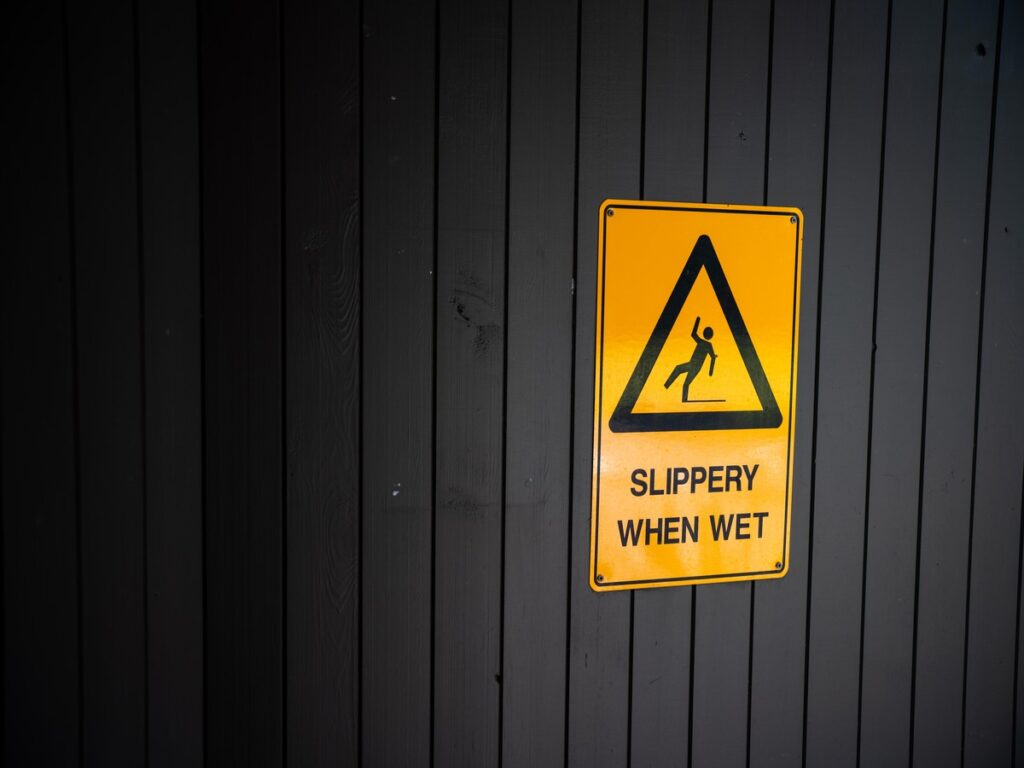
ANSI 개요, mutcd, 및 ISO 표준
ANSI와 같은 규칙, mutcd, ISO는 안전표지가 제대로 작동하는지 확인합니다.. 이 규칙은 표지판의 모양을 결정하는 데 도움이 됩니다., 어디에 둘까?, 그리고 어떤 안전표지 색상을 사용해야 하는지. 어두운 곳에서도 표지판을 쉽게 볼 수 있도록 하는 것이 목표입니다..
- ANSI/ISEA 표준: 이는 밝은 옷과 명확한 표시에 중점을 둡니다.. 재료와 색상이 빛을 충분히 반사하는지 확인합니다..
- mutcd (균일 한 교통 통제 장치 매뉴얼): 이번 미국. 규칙서는 교통 표지판이 모든 사람이 간단하고 볼 수 있도록 보장합니다..
- ISO 표준: 이러한 전역 규칙, ISO와 같은 7010, 어디에서나 동일한 기호와 색상을 사용하세요.. 이는 전 세계적으로 표지판을 일관되게 유지합니다..
이 규칙을 준수함으로써, 안전하고 법적 요구 사항을 충족하는 표지판을 만들 수 있습니다.
지역 및 국제 규정 준수 보장
안전을 유지하고 문제를 피하려면 현지 및 글로벌 규칙을 따르는 것이 중요합니다.. 귀하의 간판은 밝기와 가시성에 대한 올바른 표준을 충족해야 합니다.. 승인된 디자인 사용, 그림 물감, 규정을 준수하기 위한 재료.
실제 사례를 통해 이것이 중요한 이유를 알 수 있습니다.:
- 코크의 한 공장은 표지판을 업그레이드하여 작업을 더욱 안전하게 만들었습니다..
- 골웨이 축제의 더 나은 표지판은 군중과 비상 상황을 관리하는 데 도움이 되었습니다..
- 더 명확한 표지판으로 고객 경험을 개선한 더블린 매장.
- Limerick 병원은 환자가 길을 더 쉽게 찾을 수 있도록 해주었습니다..
이러한 사례는 안전성과 효율성이 향상된다는 좋은 징후를 입증합니다.. 안전 표지판을 만들거나 구매할 때는 항상 현지 규칙을 확인하고 전문가에게 문의하세요..
저조도 안전 표지판에서 피해야 할 일반적인 실수
튀지 않는 색상 고르기
잘못된 색상을 사용하면 안전 표지판을 보기가 어렵습니다.. 칙칙한 색상은 빛을 잘 반사하지 않습니다., 그래서 표지판이 어두워요. 텍스트와 배경이 너무 유사한 경우, 읽기가 어렵다. 예를 들어, 어두운 배경의 어두운 텍스트가 불분명합니다., 반성하더라도.
이것을 고치려면, 밝게 사용하다, 노란색과 같은 반사색, 녹색, 아니면 오렌지. 대비되는 색상과 짝을 이루세요., 노란색 바탕에 검은색 글씨처럼. 이렇게 하면 메시지를 읽기 쉽고 주의를 끌 수 있습니다.. 밝은 색상과 대비로 사람들이 표지판을 더 빨리 알아차릴 수 있습니다., 사고 위험 감소.
표지판을 제대로 배치하지 않거나 조명이 충분하지 않은 경우
아무리 좋은 교통안전표지판이라도 잘못 설치하거나 어두운 곳에 설치하면 제대로 작동하지 않습니다.. 너무 높다는 신호, 너무 낮음, 또는 기울어지면 놓칠 수 있습니다. 조명이 좋지 않으면 밤이나 어두운 곳에서 표지판을 보기가 어렵습니다..
조명이 좋지 않으면 사람들이 안전하지 않다고 느낄 수 있습니다., 어두운 골목이나 빈 건물 근처처럼. 직장에서, 희미한 빛은 눈을 피로하게 하고 실수를 유발할 수 있습니다.. 좋은 조명은 표지판을 돋보이게 하고 사람들의 안전을 지켜줍니다..
교통안전표지판이 더 잘 작동하도록, 밝은 곳에 눈높이에 놓으십시오.. 최적의 위치를 찾기 위해 다양한 각도를 테스트해 보세요.. 자연광이 충분하지 않다면, 조명을 추가하거나 야광 또는 LED 표지판을 사용하세요.. 이러한 단계는 표지판을 명확하고 유용하게 유지합니다., 힘든 조건에서도.
올바른 고반사 안전표지 공급업체 선택
신뢰할 수 있는 공급업체를 선택하는 주요 요소
올바른 안전 표지 공급업체를 선택하면 안전 표지가 제대로 작동할 수 있습니다.. 현명하게 선택하려면, 중요한 요소를 바탕으로 공급업체를 확인하세요.. 아래 표에는 무엇을 찾아야 하는지 나와 있습니다.:
| 평가기준 | 설명 |
|---|---|
| 상품 및 서비스의 품질 | 제품이 표준을 충족하는지, 불량률이 낮은지 확인하세요.. |
| 전달의 적시성 | 지연 없이 제 시간에 주문을 배달하는지 확인하세요.. |
| 비용 및 재정 조건 | 제품 품질을 저하시키지 않고 가격이 공정한지 확인하세요.. |
| 규정 준수 및 윤리 기준 | 규칙을 따르고 환경에 관심이 있는지 확인하세요.. |
| 혁신과 부가가치 | 창의적인 아이디어와 그들이 제공하는 추가 혜택을 찾아보세요.. |
| 고객 서비스 및 지원 | 문제를 얼마나 잘 해결하고 고객을 돕는지 테스트하세요.. |
안전표지 공급업체를 공정하게 비교하기 위해, 명확한 성과 목표 설정. 여기에는 배송 시간이 포함됩니다., 제품 정확도, 그리고 빠른 응답. 명확한 목표를 통해 귀하의 요구 사항에 맞는 공급업체를 찾고 어두운 곳에서도 표지판을 눈에 띄게 유지하는 데 도움이 됩니다..
경험이 풍부한 공급업체가 더 나은 이유
경험이 풍부한 공급업체는 숙련되고 신뢰할 수 있습니다.. 그들은 반사 소재를 사용하는 방법을 알고 있으며 귀하에게 가장 적합한 소재를 제안할 수 있습니다.. 그들과 함께 일하는 것이 현명한 이유는 다음과 같습니다.:
- 입증된 실적: 좋은 제품을 만들어온 이력이 있어요, 그래서 당신은 나쁜 징조를 피합니다.
- 규제 지식: ANSI 및 ISO와 같은 규칙을 알고 있습니다., 표지판을 합법적으로 유지하세요.
- 맞춤형 솔루션: 그들은 귀하의 특정 요구에 맞는 표지판을 만들 수 있습니다, 도로나 공장 같은 곳.
- 효율적인 문제 해결: 그들은 문제를 빠르게 해결합니다, 큰 지연이 발생하지 않도록.
- 장기 가치: 신뢰할 수 있는 공급업체는 내구성을 제공하여 비용을 절감해 줍니다., 고품질 표지판.
경험이 풍부한 안전 표지 공급업체를 선택한다는 것은 저조도 지역에서도 밝고 안전하게 유지되는 우수한 안전 표지를 얻는 것을 의미합니다..
어두운 곳에서도 사물을 더 쉽게 볼 수 있도록 하는 것이 안전을 위해 중요합니다.. 밝은, 반사 안전 표지판 색상 및 소재는 표지판을 돋보이게 합니다.. 이는 위험을 낮추고 사고를 예방합니다.. 최고의 안전표지 색상 고르기, 코팅, 표지판을 위한 지점은 어디에서나 메시지를 명확하게 유지합니다..
밝은 색상의 옷과 저조도용 안전 표지판을 사용하여 안전을 유지하세요.. 이 도구는 근로자를 보호합니다, 드라이버, 그리고 워커, 모두가 안전하고 건전하게 지낼 수 있도록 돕습니다..
안전표지 색상과 그 효과에 대해 자세히 알고 싶습니다.? 블로그를 확인하십시오: “교통 안전 부호 색상 및 설계 원리 이해: 포괄적 인 개요” 안전 표지판에 적합한 색상을 선택하고 가시성을 극대화하는 방법에 대한 심층적인 통찰력을 제공합니다..
FAQ
반사 안전 표지판은 어둠 속에서 어떻게 작동합니까??
반사 표지판은 빛을 광원으로 다시 비춥니다., 자동차 헤드 라이트처럼. 이렇게 하면 밤이나 어두운 곳에서도 쉽게 볼 수 있습니다.. 밝은 색상과 특수 코팅으로 더욱 돋보입니다..
안전표지는 어떤 색을 골라야 할까요??
밝고 간판의 목적에 맞는 색상을 선택하세요. 경고에는 노란색이나 녹색을 사용하고 긴급 상황에는 빨간색을 사용하세요.. 고대비 색상으로 표지판을 더 쉽게 빠르게 알아볼 수 있습니다..
빛 없이도 반사 표지판이 작동할 수 있나요??
반사 표지판에는 약간의 빛이 필요합니다., 헤드라이트처럼, 일하다. 빛이 없는 곳에서, 야광 또는 LED 표지판을 사용하십시오.. 어둠 속에서나 정전 중에도 가시성을 유지합니다..
반사 안전 표지판은 글로벌 규칙을 따르나요??
예, 대부분의 반사 표지판은 ANSI와 같은 규칙을 충족합니다., mutcd, 그리고 ISO. 이러한 규칙을 통해 표지판이 밝게 표시됩니다., 분명한, 안전하고 합법적인 상태를 유지하기 위해 올바르게 배치되었습니다..
반사 안전 표지판을 어디에 두어야 합니까??
사람들이 쉽게 볼 수 있도록 눈높이에 표지판을 설치하세요.. 차량이나 보행자를 향하고 있는지 확인하세요.. 위험한 지역에서, 조명이나 반사 코팅을 추가하여 더 선명하게 만듭니다..
